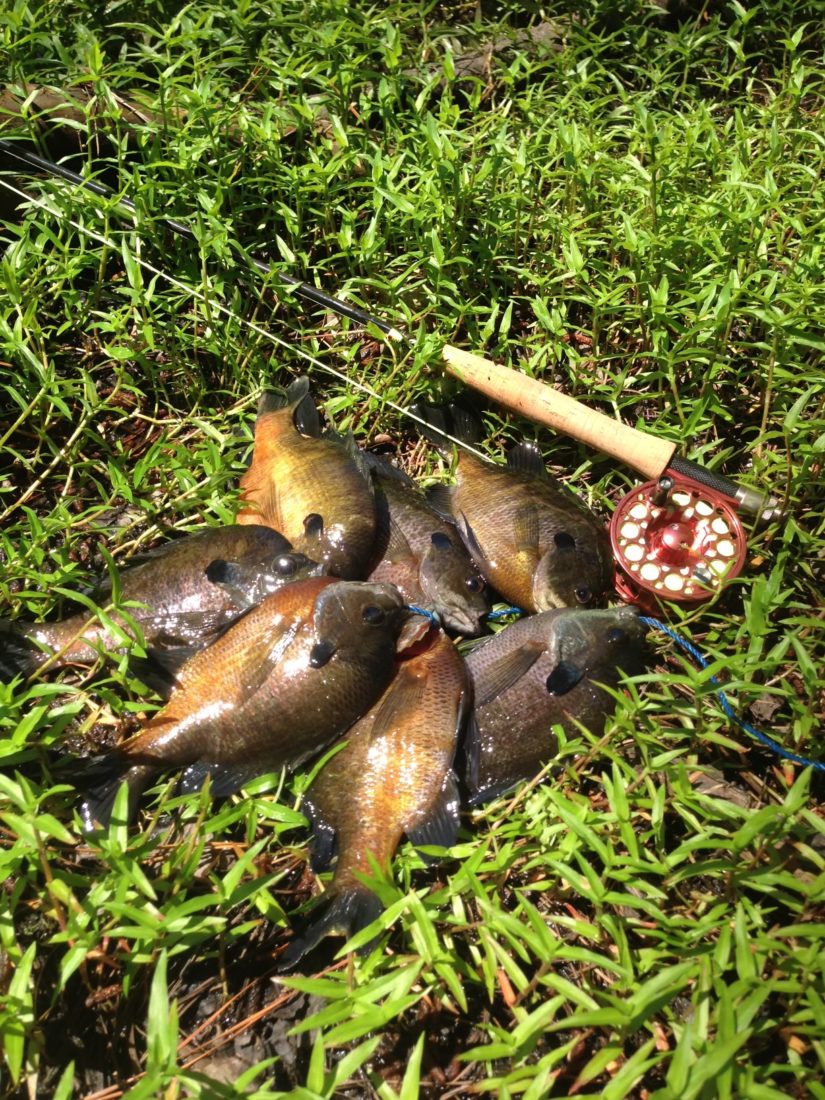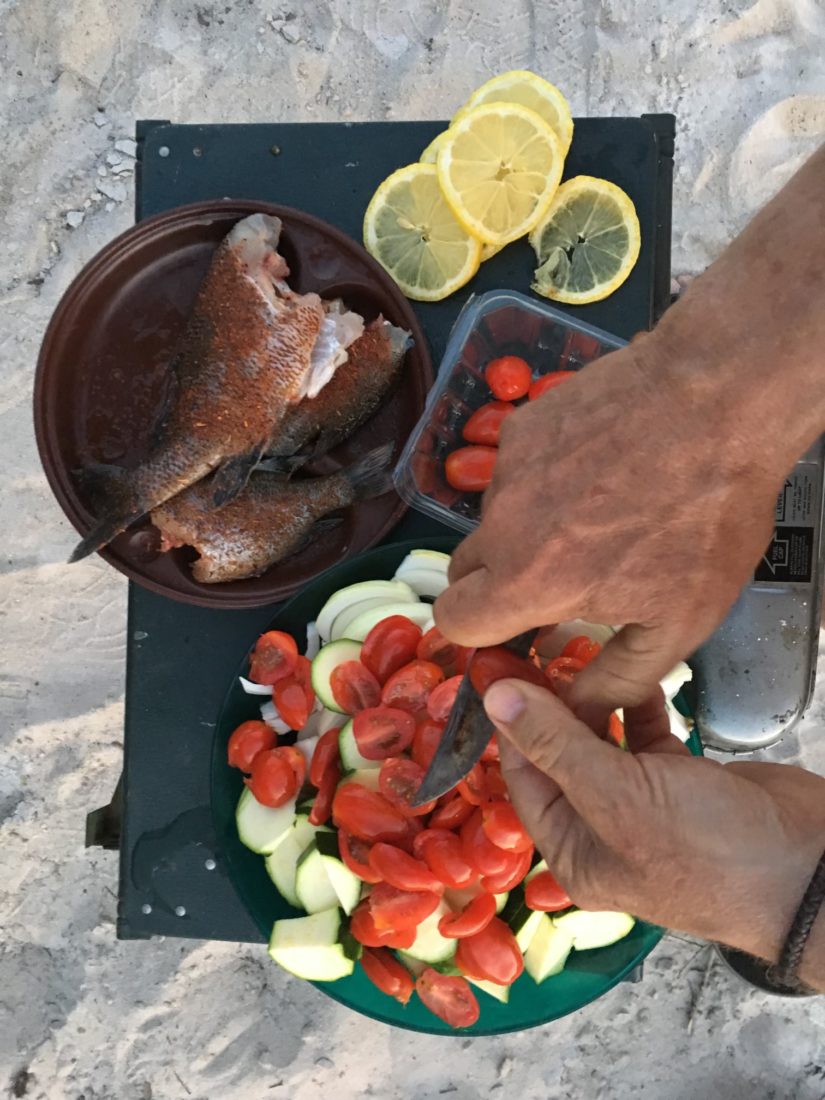Over the last few years, I’ve had a personal goal to catch, fry, and eat a fish in a single day as often as possible. Sometimes that means cooking a fish at home. But often it means frying one up in situ, meaning pondside or streamside. Thankfully, the ubiquitous bluegill and redbreast sunfish haunt nearly every farm pond, reservoir, and river within a hundred miles of home, so snatching a bream for a quick lunch or dinner isn’t all that difficult. What makes it even easier is that I’ve pared down my fish-frying to its delicious essence. In the past, I often thought of fried fish as too messy, too much trouble, and too much cleanup for a quick lunch or dinner. No longer. The secret is pan-frying, in which you use only enough oil to get the job done, which leaves far less mess to deal with. And my streamlined approach doesn’t give an inch when it comes to taste.

This method can be easily scaled up or down, although frying fish for large groups calls for a deep fryer. But for groups of little ol’ me to three or four buddies, this is my super-quick, super-easy, and nearly no-fail method. When I’m on the road, I use a camp stove and my truck’s tailgate. But it works equally well at home or on the side-burner of many gas grills.

When traveling, I carry a fry kit that fits nicely into an old plastic milk crate. In it goes a bottle of peanut oil, which holds up to high frying temperatures better than other oils. There’s a gallon zippered plastic bag filled with two cups of House Autry fish breading, another zippered bag with a shaker of Cajun spices, and a couple of coffee filters. Then a roll of paper towels, a camper’s frying pan with a collapsible handle, and a metal spatula and metal fork. Add a camp stove, and you’re ready. After you catch and clean fish, of course. Here’s my method:
Score the fish
I used to do this only on bony critters such as shad, but I’ve since gone whole hog on the idea. I score just about every fish I fry, slashing vertical cuts through each side all the way to the backbone, maybe an inch to an inch-and-a-half apart. Scoring fish allows seasoning and breading to coat more surface area, adding taste and crunch. And it also makes it easier to eat fish with your fingers, as each piece between the cuts can be peeled off one by one. Extend your pinky if you feel the need to do so.
Season and bread
Season the fish with some healthy shakes of your favorite seafood or Cajun spice blend. Then toss the fish into the seafood breading, giving it a vigorous shake or three. Work the breading into the scored cuts with your fingers.
Fry time
You’ll want enough oil to fry the fish on one side at a time, without oil running over the top of the fish. It’s tricky, but the more you do this, the better you’ll get at it. Heat the oil to between 325 and 350 degrees, and use an instant-read thermometer if you have one. If not, scatter a few water droplets into the pan with your fingers; the oil needs to sizzle. Now place each fish into the oil. Cook until golden brown, then flip. Drain on paper towels, and dive in.
Oh, yeah. The coffee filters. I use those to filter the cooled peanut oil back into the bottle for the next pond expedition.
Follow T. Edward Nickens on Instagram @enickens.








